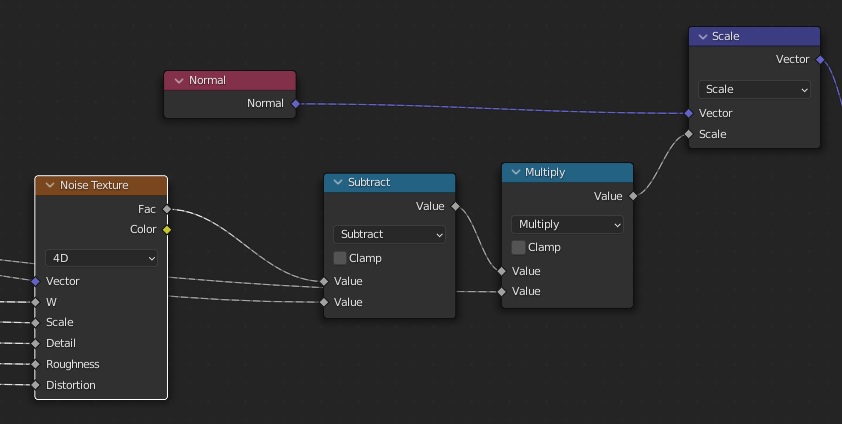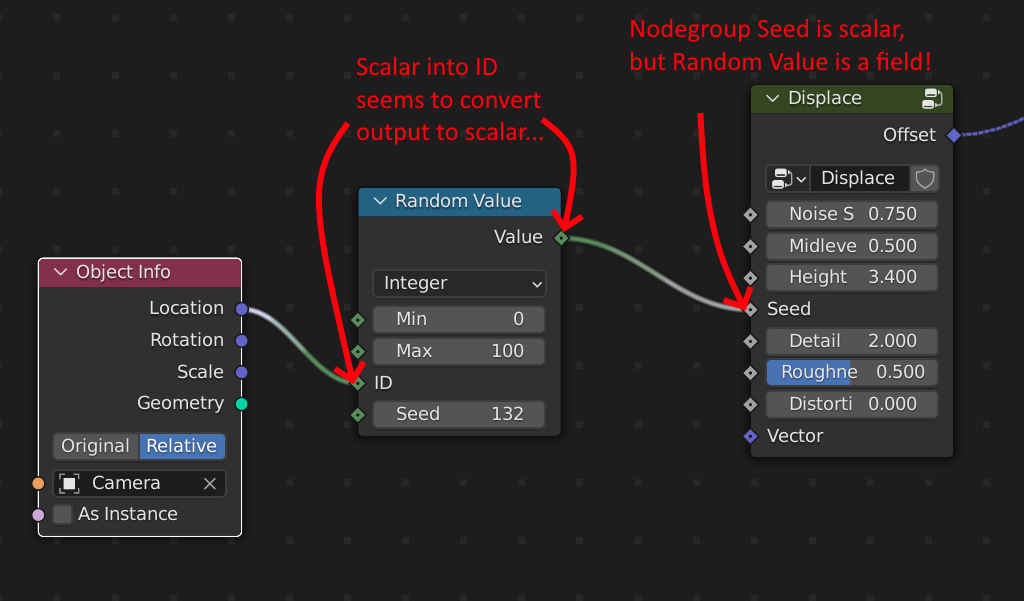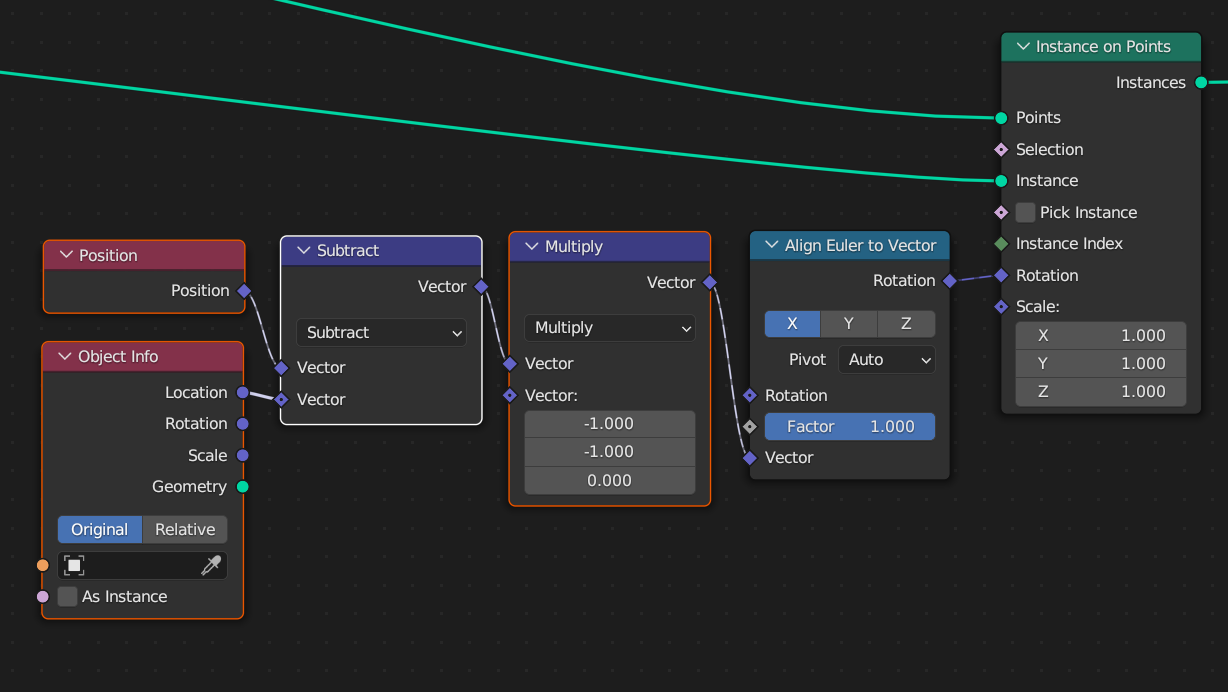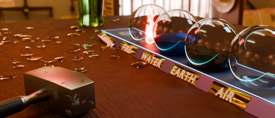Some Useful Blender Tips
Some Blender tips and tricks that I’ve built up over my short time, so saving them here so I don’t forget them :D
This will keep being updated as I think of them.
Circular Array #
This used to be a weird, complicated thing about parenting empties with offset origins, etc.
Now, we just get a circle with verticies where you want them, then use Geometry nodes to instance whatever you want onto it.
So EZ now!
Edit View: Local coords #
shift + numpad 1,7,3, etc aligns view to object LOCAL coords instead of global!!!!
This is super useful if you’ve rotated the object away from norms.
e.g. You have a cube, you rotate it to align with something else, but then you want to do some modelling on a face of it but pressing the 1,3,7 combos now don’t line up.
shift + 1,3,7 will align to local coords so you can!
Quick Geometry Nodes Displace setup #
The below nodes plug into the Offset socket of the “Set Position” node.

Geometry nodes weirdness #
- Collection Info node sometimes needs “Realise Instances” node
- This is usually when you need to modify the instances e.g. “Set Position”, scale, etc
- Collection Info node sometimes need to tick “Separate Children” and “Reset Children” and “Pick Instance” with Random or something plugged in
- This is usually for instancing items from the collection, instead of the whole collection, but I’ve had weird behaviour around this before. i.e. needed to tick it when I didn’t think I should.
- MAKE SURE SCALE IS APPLIED!!!
- If you don’t want a field, get “Object Info” and plug “Location” into a socket like Index or ID
- Especially useful for node groups that take scalar values e.g. seed
- Issue is that if you plug “Random Value” into Seed so you get a random value per displace, it does it as a field (Random output is a field), which means that EACH POINT gets a different seed
- Instead, turn the Random output into a scalar with this trick
 Weird trick to get a scalar value out of a field
Weird trick to get a scalar value out of a field
Quick procedural wood setup #
No example, but just a noise texture with some distortion stretched on one axis, include bump map, usually based on the same noise texture.
Geometry nodes: Look at #


